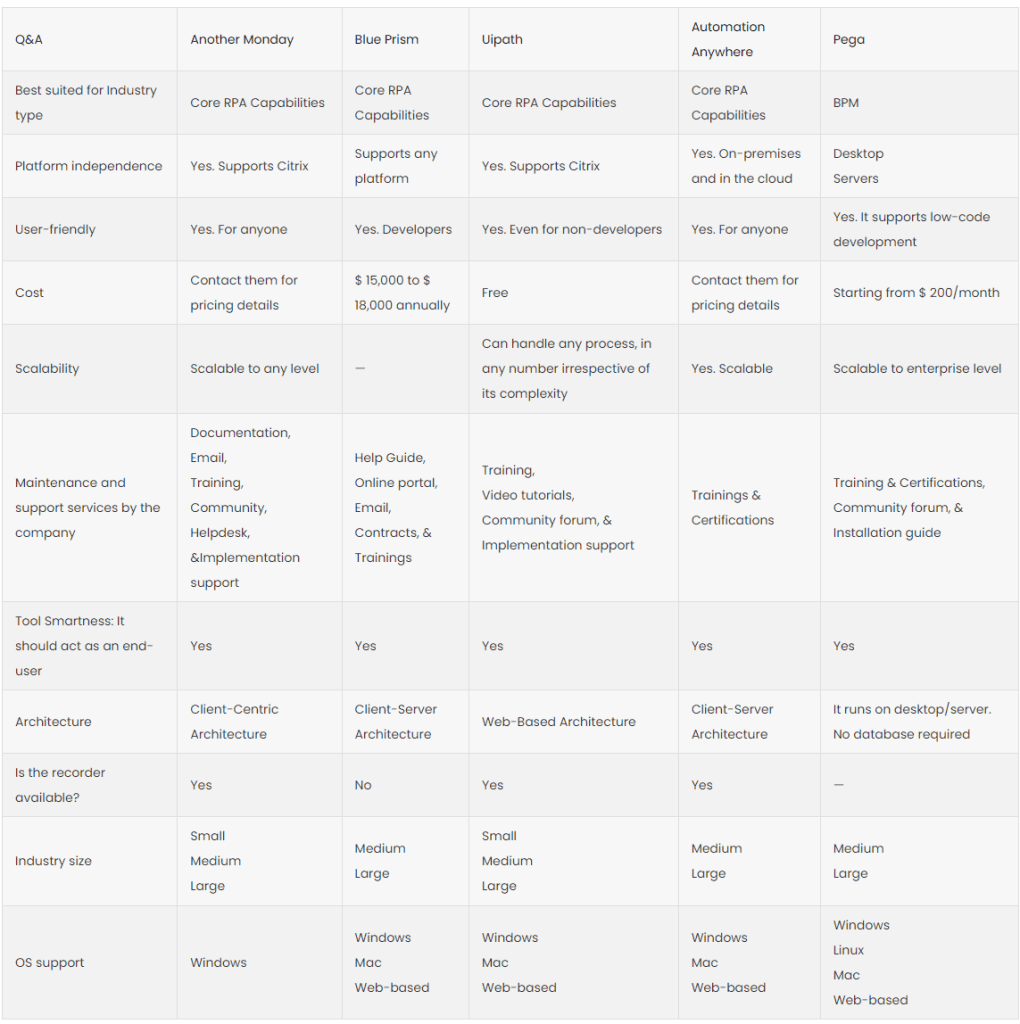Ensuring Quality with Robotic Process Automation (RPA)

For some time, we have been seeing Google ads and news on LinkedIn about robotic process automation (RPA). One ad calls it a way to free employees so that they can focus on higher-value work by automating repetitive human tasks. Another ad calls it a way to improve process efficiencies and the competitiveness of their customer experiences. And there are plenty of ads on scaling businesses, reducing costs, and hastening automation, but what does it really do?
We sat down with Amzur’s head of QA, Balu Chebolu, and talked to him about the details of RPA and its differences when compared to software testing.
Bengi Lynch:
Robotic Process Automation (RPA) provides a fast, inexpensive, and easy way to automate manual steps that involve people, data, and integration. It has been attracting business people and technologists alike.
What is Robotic Process Automation when it is compared to software testing, and what are the different applications of Robotic Process Automation?
Balu:
“Business automation tools called RPA provide a new powerful tool for testers and business users doing testing, especially in the context of implementing large-scale standard systems like SAP, Microsoft Dynamics 365, Salesforce, etc. While there are other power tools for web and API testing, the RPA tools are in a class of their own, as RPA tools allow for codeless automation macros on the desktop. RPA tools can do some very handy things. They can be used for both test data and regression testing. Next, we’ll walk through a real testing example and show how you can get started using RPA. As RPA makes user acceptance testing (UAT) and end to user testing more effective than before, especially when implementing commercial off-the-shelf business systems, this seems to challenge the base of the testing pyramid. In the testing pyramid model, the GUI test automation is expensive and should be done less compared to the unit and integration testing, which there should be more of. “
Using RPA as a test tool, it is possible to do a lot of GUI test automation, as the tool can capture repeated IT system interactions.
Bengi Lynch:
Which RPA offers an open platform for automation? What are the popular RPA tools? How would you define the RPA’s characteristics?
Balu:
“Uipath provides an open platform for automation; it is a major part of RPA. Here such processes are present, where the main object is automated several applications present in the PC system. He says that it helps control websites automatically with the process of machine learning and artificial intelligence and reduces the manpower requirements. The expenses will be reduced for an organization.”
In 2019, Blue Prism also announced its idea for connected-RPA. Connected-RPA is the offering of an automation platform with AI and cognitive features built-in. The Digital Exchange gives customers and partners the ability to create and share tools that can be used with Blue Prism’s software.
Balu compares the top five RPA tools in this table below:

Bengi Lynch:
Can you audit the RPA process? How is it different from software quality assurance and testing?
Balu:
“RPA works best when it complements audit workflows and is integrated into familiar activities.”
Auditing robotic processes
Increasing use of RPA across the organization means that an audit is likely to encounter robotics software during audit engagements. Because RPA mimics human activities, many controls around RPA processes are similar to those of the processes they are replacing. However, RPA implementation often includes process redesigns and new risks related to new technologies.
The audit should, therefore, consider the risks to the business, including governance and legal, when evaluating RPA pilots or implementations. The need to address these and other risks calls for teams to play a new role. Audit leaders must now ensure that:
- An appropriate RPA program governance structure is in place and followed.
- Relevant controls in RPA implementation are not accidentally eliminated and new risks have adequate controls in place.
- A clear process is in place to effectively manage process exceptions that are likely to increase as transaction volume increases.
- Newly automated systems have adequate plans in place to continue critical operations in case of intentional or unintentional RPA system outages.
Learn more: Internal Audit and RPA
Applying RPA inside audit departments
Audit departments are also starting to use RPA, given the many repetitive tasks auditors conduct. RPA automates standard steps in audit engagements like gathering all data and including prior audit findings during the risk assessment phase. Audit teams can also automate certain reviews during the audit, such as password tests or contract reviews.
“Audits have large opportunities to realize the benefits of RPA,” says Chebolu. “There are clear opportunities for audit teams to automate the many repetitive, low-value, time-consuming activities and free auditors’ time for higher-value tasks.”
Leaders should look for processes within their department’s control to implement RPA. Based on the impact of the process or activities, leaders can ask themselves three key questions to understand if RPA is appropriate:
- Can the current human activity be process mapped (i.e., is it the same repetitive process being done each time)?
- If the activity requires human judgment, can the rules on how to make that judgment be defined to cover all angles?
- Does the activity pull data from and put data in the same place every time (i.e., the same field name or same location of the field on a particular screen of a system)
If the answer is yes to all three questions, then the process or activity is a candidate for RPA. If the rules can’t be defined or articulated, it’s best to leave those tasks to humans. Remember: RPA is most effective when used to create efficient processes that allow human resources to be deployed to higher-value activities. RPA should improve human work rather than hinder it or make its execution more complicated.
Also, consider how new processes fit into larger audit workflows. RPA works best when it complements audit workflows and is integrated into familiar activities. RPA bots with little relationship to auditor workflows are unlikely to be used.
Bengi Lynch:
Are there other benefits to RPA? How is Amzur utilizing RPA? How long does a robot automation project take?
Balu:
“We have been testing RPA technology to help with the prescreening and onboarding of new employees. Now that we’ve automated that process, usually the same day that the employee starts, they have accounts set up, they have their email set up. RPA bots are contributing to the work of full-time interviewers.”
Bengi Lynch:
How can business leaders use RPA tools to automate repetitive tasks? What type of investment should they be making? What would be the return on this investment in the long run?
Balu:
Amzur has been operating since 2004, and over the past decade, despite all the automation investments that organizations have made, many companies still encounter significant wastage when processing transactions. This waste often surfaces when organizations launch Six Sigma and Lean initiatives that examine their processes, and it is typically unseen, unconsidered, or unimportant to business and IT organizations until they count the total cost or discover an automation tool that helps them tackle what was previously written off as “the cost of doing business.” It is a common theme in business/board meetings to stay low on the operating expenses to shine the profits high—so there is limited to no interest in changing already transformed large-scale business processes.
Unleash the power of your digital workforce
Robotic Process Automation (RPA) can produce huge ROI – if you do it right. Find out how!




